- Home
- James Rollins
The Bone Labyrinth Page 3
The Bone Labyrinth Read online
Page 3
“All of this puts those scribblings in Lascaux to shame, does it not?” Wrightson said with a large grin. “But that’s not all.”
“What do you mean?” Father Novak asked.
“Should we show them what’s hidden in plain sight?” Wrightson asked Arnaud.
The Frenchman shrugged.
Wrightson drew their attention away from the walls to the room’s center. A wide black stain, spreading two meters across the floor, marked the site of what must have once been a large bonfire. A tripod of lighting panels rested there.
The geologist dropped to a knee beside a panel of switches wired into the power cable. “If you’ll be so kind as to douse your helmet lamps.”
After they had all obeyed, he flipped a switch, and all of the light panels extinguished. Darkness dropped heavily over them.
“Now to be transported forty thousand years into the past,” Wrightson intoned, sounding like a circus ringmaster.
The snap of a thrown switch popped and light flared anew, coming solely from the trio of panels in the room’s center, but it was still bright enough to dazzle and blind, especially as the lighting flickered and strobed.
To mimic a bonfire, she realized.
At first she did not understand the point of such a display, but a gasp rose from Father Novak. She followed the priest’s gaze back to the walls. Giant shadows now danced across the walls, rising far taller than the swirl of petrogylphs below. The shadows were cast upon the walls from a circle of stalagmites rising from the floor. Only now did Lena note how they had been carved and sculpted, drilled and shaped, all to create the shadowy army on the wall.
The silhouettes were clearly human in shape, but some bore curled horns and others lofted spears in the air. The flickering light also added to the sense of motion in the animals below, making them look panicked. The lone cave bear faced one of those figures; only a shadowy spear now pierced the side of the mighty beast. Its former bellow of rage now appeared more like a frozen moment of torment.
Lena turned in a slow circle, entranced by the images, an innate terror seeping into her bones. Even Father Novak crossed himself protectively.
“Enough of this foolishness,” Arnaud snapped.
Wrightson obeyed, and the rest of the lights flared to life.
Lena took a deep breath, inhaling the earthy scent of the air, feeling the steel tread under her boots, grounding herself back into the present. “Im . . . impressive,” she managed to eke out. “But what do you think it means? Was it some representation of a hunt, some accounting of the tribe’s skill at tracking and taking down prey?”
No one answered for a moment until Father Novak spoke.
“It felt like a warning,” the priest said. He gave a small shake of his head, as if unsure how to put into words how he felt.
Lena understood. The display here did not look like the celebration of a tribe’s skill with spear and club. It felt like an affront, something brutal and threatening.
“Such mysteries are not yours to solve,” Arnaud said, drawing them forward yet again. “That is not why we’ve brought you on site.”
The Frenchman led the way toward the room’s far side, where an archway led out of the painted cavern. As they passed one of the carved stalagmites, Lena wanted to stop and examine it, to see how these ancient people managed such an illusion of shape and motion, but Arnaud kept them moving quickly.
There were no more light panels beyond the main chamber. Past the arch in the cave was only darkness. Lena clicked her helmet lamp back on. A spear of light pierced the shadows, revealing a short tunnel that ended at a crumbling wall.
Arnaud led them up the slight incline toward the passageway’s end.
“It’s been bricked up,” Father Novak said, clearly as surprised as she was.
“This isn’t the handiwork of any Paleolithic people,” Lena said. She ran her hands over the bricks mortared in place. “But it is old.”
Wrightson stepped forward, bending down to shine his light into a man-sized hole that had been broken through the wall. “Past this obstruction, the passageway continues another fifty yards, then ends in an old tunnel collapse. I believe this passageway was the original entrance into the cavern system. Someone plainly bricked it up to keep everyone out. Then some old quake centuries ago sealed it even more thoroughly.”
Lena peered through the hole with him. “Apparently what one quake sealed, another opened up.”
“Precisely. Buried secrets have a stubborn habit of returning to light.”
“What’s beyond this wall?” Father Novak asked.
“The very mysteries that drew us to summon you two here.” Wrightson leaned back and waved an encouraging arm toward the hole.
Beyond curious, Lena crawled through first, following the beam of her helmet lamp. The wall was two feet thick. On the far side, a small chamber opened, bricked on all sides, forming what felt like a small chapel.
Father Novak joined her, shining his light across a ceiling supported by a crisscrossing of double arches. “I recognize this architecture,” he said, sounding shaken up. “Such Gothic brickwork was typical of the Middle Ages.”
Lena barely heard him, her attention drawn to an alcove in the wall to one side. It had been hewn out of the natural rock. Inside, a skeleton lay in a shallow niche in the floor, the bony arms crossed on the chest, all surrounded by a perfect circle of rocks. Within that ring, smaller bones—ribs, carpal and tarsal bones, tiny phalanges—had been artfully placed around the body, forming a complicated and purposeful design.
“Could this be the grave of one of those men who sealed the tunnel long ago?” Novak asked.
“From the pelvic shape, it was a male.” Lena leaned closer, moving her lamp from toe to head, wishing for better lighting. “But look at the skull, at the heavy brows. If I’m not mistaken, these are the remains of Homo neanderthalensis.”
“A Neanderthal?”
She nodded.
Novak glanced to her. “I’ve heard such remains had been discovered elsewhere in Croatia.”
“You’re correct. Up in the Vindija cave.”
Lena began to understand why she had been summoned here. It was the Max Planck Institute that had performed the DNA analysis on those remains at Vindija. The discovery helped the institute build the first complete Neanderthal genome.
“But I thought Neanderthals were not cave painters?” Novak asked, glancing in the direction of the main cavern.
“That’s debatable,” she answered. “There is the El Castillo cave in Spain. The chambers there are full of art: handprints, animal drawings, and abstract designs. Dating suggests that some of that artwork might have been done by Neanderthals. But that’s still up in the air, and you’re right in regards to the level of sophistication found here. The most beautiful petroglyphs—like those found in France at Lascaux and Chauvet—were all done by early man. No one has ever found any cave paintings of this complexity and skill done by a tribe of Neanderthals.”
Possibly until now.
Arnaud spoke behind them, coming into the chapel with Wrightson. “It is why we sought the help of you and your fellow geneticists, Dr. Crandall. To discover if the cave dwellers here were indeed Neanderthals. And if so, to perhaps discover what made them so different, such fervent artists.”
Lena shone her light toward the back of the gravesite, toward one last piece of art, a petroglyph made of palm prints arranged in the shape of a star. The large prints were a reddish brown under her light, reminding her of dried blood.
She pulled out her cell phone and took a few shots of the gravesite, then returned her attention to the body in the shallow depression, wondering if those prints were made by the Neanderthal man resting here. She also remembered the terrifying shadows flickering on the wall, along with Novak’s conviction.
It felt like a warning.
Wrightson cleared his throat. “Which brings us next to the mystery . . . this one intended for our Father Novak.”
1
1:52 A.M.
Upon hearing his name, Roland pulled his attention away from the remains in the grave. Is it not mystery enough why someone had entombed the remains of a Neanderthal inside what plainly felt like a medieval chapel?
“One last step, my good man,” Wrightson said, and pointed to another hole broken through a section of the bricked back wall. According to the geologist’s earlier description, this way led toward where the tunnel once continued to the surface.
Intrigued, Roland crawled through and stood up in the far tunnel. He shone his light ahead but saw nothing of particular note—except for a parallel set of scrapes in the floor that gouged deeply through the layers of calcite.
Wrightson joined him, scowling at the damage himself. “Looks like something heavy was dragged out of here. Likely taken by whoever blocked up this tunnel and sealed it.”
“And you believe I might help solve that mystery?” Roland asked.
“I don’t know if you can, but there is one matter where I believe you can be of assistance.”
Wrightson took him by the shoulders and turned him back toward the wall behind him. Only now did he see a metal plate bolted to the wall, like a grave marker.
“Something’s written on it,” Wrightson said, bringing his light closer. “In Latin.”
Roland squinted. Age and corrosion had obscured some of the etched letters, but it was clearly Latin. He could make out a few snatches, including the last line and the signature of the person who had left this message.
“Reverende Pater in Christo, Athanasius Kircher,” he read aloud, then translated this in turn. “The Reverend Father in Christ, Athanasius Kircher.”
Roland glanced with shock toward Wrightson. “I . . . I know this man. I did my dissertation on this priest and his work.”
“A fact of which I’m well aware. It’s why the Vatican assigned you here.” Wrightson nodded toward the plate. “And the rest of the message?”
Roland shook his head. “I can make out bits and pieces. With time and the proper solvents, I might be able to restore it. But the longest line I can discern right now translates roughly as Let none pass this way, lest they bear the wrath of God Himself.”
“A little late for that, I’d say,” Wrightson mumbled.
Roland ignored him and studied the marker.
Here was yet another warning.
In the distance, a loud rumble of thunder echoed down to them. The storm had finally struck the mountains.
“Time to go,” Wrightson said, and led him back through the chapel, gathering their other two teammates along the way. When they reached the main chamber, the geologist pointed ahead. “We should get topside before—”
An explosive crack of thunder rang out, cutting him off. Then the cavern’s many lamps suddenly extinguished, leaving them with only their helmet lamps for illumination. From out of the deeper darkness ahead, a distant screaming reached them.
But this time, it wasn’t the cries of witches out of ancient folklore.
A faint spatter of gunfire echoed to them.
Arnaud grabbed Roland’s arm. “We’re under attack!”
2
April 29, 6:08 A.M. EDT
Lawrenceville, Georgia
Terror wakes him.
The pounding in his ears drives him to move. He rolls from his bed as an image flashes before his eyes, a face . . .
Mother.
He rushes across his dark room to the window and slaps his palms, then his fists against the thick glass. Pressure builds in his chest until it can be held no longer. He roars his frustration.
Finally light flares overhead, and a face appears beyond the glass, staring back at him. It is not the one he wants.
He places a thumb to his chin, repeating the motion over and over.
Mother, mother, mother . . .
6:22 A.M.
An abrupt knock on the door woke Maria in her office. Fueled by a vague sense of panic, she jerked up to an elbow. Her heart pounded in her throat. An open book, resting on her bosom, toppled to the floor. It took her a half breath to remember where she was—though no more than that, since she had spent many nights at work.
Calming herself, she glanced to the computer monitor on the neighboring desk. The screen scrolled with data from the latest genetic assay. She had fallen asleep while waiting for it to compile.
Damn . . . still processing.
“Y-yes?” she managed to croak out.
“Dr. Crandall,” a voice called through her office door. “I’m sorry to disturb you, but there’s a bit of a ruckus with Baako. I thought you should know.”
She sat quickly, recognizing the nasal twang of the animal husbandry student from Emory University.
“Okay, Jack, I’ll be right there.”
She climbed to her feet, took a swig of stale Diet Coke from the can on her desk to wash away her morning dry mouth, and headed into the hall.
The student on duty, Jack Russo, paced beside her.
“What happened?” she asked, trying to keep any accusation out of her voice, but her maternal instincts made her words harsher than she intended.
“Don’t know. I was cleaning some empty pens nearby when he just went off.”
She reached the door that led down to Baako’s domicile. Below, he had his own dedicated playroom, bedroom, and classroom, separate from much of the rest of the facility. During the day, under supervision, he also had a fair amount of free run of the hundred wooded acres that made up the field station of the Yerkes National Primate Research Center. The main facility was located at Emory University in Atlanta thirty miles away.
That was still too close for her tastes. She preferred the autonomy she had out here in Lawrenceville. Her project was mostly independent of the rest of the research station, financed through a DARPA grant provided under the auspices of a new White House initiative, called BRAIN, short for Brain Research Through Advancing Innovative Neurotechnologies.
With a dual PhD in genomics and behavioral science from Columbia University, Maria had been handpicked—along with her sister Lena—for this unique project: an exploration into the evolution of human intelligence. The project had additional funding through the Max Planck Institute for Evolutionary Anthropology in Germany, where her twin sister was currently overseeing parallel research on the latest in genomics.
Maria reached the lowermost door and waved her keycard across the electronic reader to gain access. She rushed through, trailed by Jack. The student stood a head taller than her and wore a pair of oversize khaki work overalls with the Emory University badge on the shoulder. He kept rubbing nervously at his scrubby blond goatee, a match to his unkempt long hair, which was tied back with a bandanna in a typically collegiate hipster manner.
“It’s okay,” Maria tried to reassure the worried student as she entered the foyer to her research suite. “Why don’t you go fetch Tango? That always helps.”
“Will do.” Jack looked relieved to rush off through a side door.
Maria crossed to a wide window of three-inch-thick safety glass. It opened a view into a room scattered with boxes in a rainbow of primary colors, each bearing a letter of the alphabet. They looked like a tumble of child’s toy blocks, except each was a foot in diameter and made of thick plastic. The far wall was covered in an erasable whiteboard with slats holding an array of markers. The only piece of furniture was a wide table with a set of chairs.
It was the classroom for a unique student.
That pupil paced before the window, knuckle-walking on his left arm while making vague signs with his right, as if mumbling to himself. He was plainly agitated.
“Baako,” Maria called to him, placing her palm against the glass. “It’s all right. I’m here.”
He hooted at her and moved in her direction.
She crossed to the entry, used her keycard to unlock the main door, and passed into the small cage on the far side. She unlatched the cage gate and joined him inside the classroom.
Baako hurried toward
her, shambling upright. When he reached her, he hooked a warm, furry arm around her waist and pressed his heavy brow against her belly, plainly wanting to be reassured.
She sat down on the floor, urging him to do the same, while studying him, reading his body language.
Baako was a three-year-old western lowland gorilla, an immature male weighing a hundred and fifty pounds and standing over four feet high. While he was powerful, there remained a gangly nature to his limbs and body. As he settled to his bottom in front of her, his large eyes, the color of dark caramel, stared at her, crinkling at the corner with clear distress. His furry black brows remained pinched with worry. His lips were stretched taut, almost a wince, showing a hint of his white teeth.
Having raised him since he was born, Maria knew every detail about Baako—everything from his behavior to minute details of his physiology. Complete MRIs were done quarterly to keep an exacting record of his bodily growth, concentrating on the anatomy of his skull and the conformation of his brain.
As she held him, she ran her fingers over the bony sagittal crest that ran along the midline of his cranium. It was less prominent than would be expected for a gorilla at this age. Even his mandibular and maxillary bones were less pronounced, creating a flatter muzzle than typical for a primate.
“Now what’s wrong, my handsome boy?” she asked in soft, reassuring tones.
He raised his fists to either side, then opened his hands and drove his splayed fingers across his torso, palms toward his chest.
[Afraid]
Responding with both voice and sign, she pointed to him, repeated his gesture, and finished by opening her palms upward with a slight shrug. “You afraid of what?”
He flicked his thumb on his chin, his other fingers splayed open.
[Mother]
Maria knew Baako considered her his mother, which in many ways she was. While she might not have given birth to him, she had fostered him and raised him as if he were her own child. Additionally, even from a biological standpoint, Baako was technically hers. Baako was not wholly a western lowland gorilla. His unique genome had been engineered in her fertility lab, with the resulting embryo carried to term by a surrogate female gorilla.

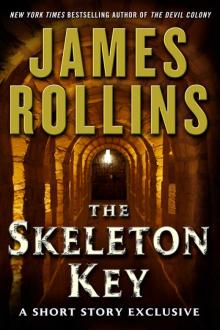 The Skeleton Key
The Skeleton Key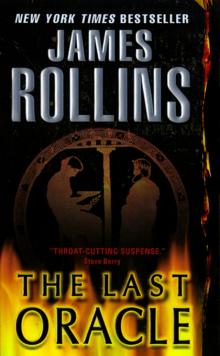 The Last Oracle
The Last Oracle The Judas Strain
The Judas Strain Black Order
Black Order Sandstorm
Sandstorm Ghost Ship
Ghost Ship The Devil Colony
The Devil Colony Subterranean
Subterranean The Doomsday Key
The Doomsday Key The 6th Extinction
The 6th Extinction Bloodline
Bloodline Jake Ransom and the Howling Sphinx
Jake Ransom and the Howling Sphinx The Midnight Watch
The Midnight Watch Map of Bones
Map of Bones The Demon Crown
The Demon Crown Deep Fathom
Deep Fathom Sigma Guide
Sigma Guide Kowalski's in Love
Kowalski's in Love Jake Ransom and the Skull King's Shadow
Jake Ransom and the Skull King's Shadow Excavation
Excavation The Seventh Plague
The Seventh Plague Altar of Eden
Altar of Eden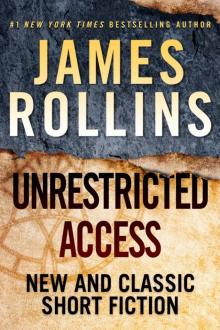 Unrestricted Access: New and Classic Short Fiction
Unrestricted Access: New and Classic Short Fiction Indiana Jones and the Kingdom of the Crystal Skull
Indiana Jones and the Kingdom of the Crystal Skull Crucible
Crucible The Eye of God
The Eye of God The Bone Labyrinth
The Bone Labyrinth The Last Odyssey: A Thriller
The Last Odyssey: A Thriller Unrestricted Access
Unrestricted Access Amazonia
Amazonia Blood Brothers: A Short Story Exclusive
Blood Brothers: A Short Story Exclusive Map of Bones: A Sigma Force Novel
Map of Bones: A Sigma Force Novel The Skeleton Key (sigma force)
The Skeleton Key (sigma force)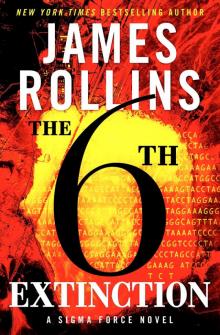 Sigma Force 10 - The Sixth Extinction
Sigma Force 10 - The Sixth Extinction Innocent Blood
Innocent Blood Map of Bones sf-2
Map of Bones sf-2 The Eye of God: A Sigma Force Novel
The Eye of God: A Sigma Force Novel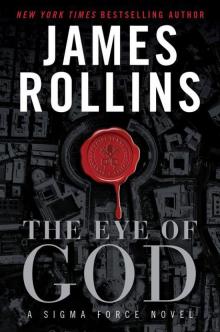 The Eye of God: A Sigma Force Novel sf-9
The Eye of God: A Sigma Force Novel sf-9 The Pit
The Pit Indiana Jones and the The Kingdom Of The Crystal Skull
Indiana Jones and the The Kingdom Of The Crystal Skull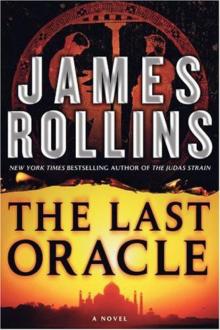 The Last Oracle (2008) sf-5
The Last Oracle (2008) sf-5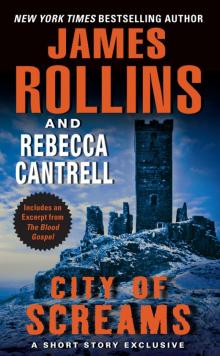 City of Screams
City of Screams The Doomsday Key and The Last Oracle with Bonus Excerpts
The Doomsday Key and The Last Oracle with Bonus Excerpts The Judas Strain sf-4
The Judas Strain sf-4 Blood Infernal
Blood Infernal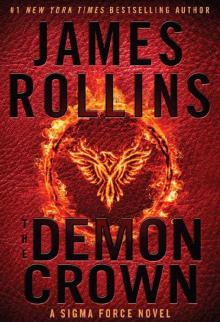 The Demon Crown: A Sigma Force Novel
The Demon Crown: A Sigma Force Novel War Hawk: A Tucker Wayne Novel
War Hawk: A Tucker Wayne Novel SANDSTORM sf-1
SANDSTORM sf-1 Bloodline: A Sigma Force Novel
Bloodline: A Sigma Force Novel Amazonia: a novel
Amazonia: a novel The Last Oracle: A Sigma Force Novel
The Last Oracle: A Sigma Force Novel City of Screams (the order of the sanguines)
City of Screams (the order of the sanguines) Ghost Ship: A Sigma Force Short Story
Ghost Ship: A Sigma Force Short Story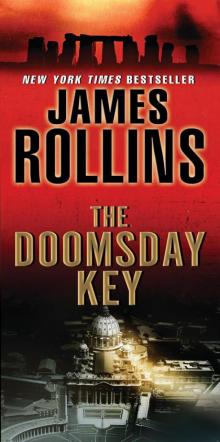 The Doomsday Key: A Sigma Force Novel
The Doomsday Key: A Sigma Force Novel